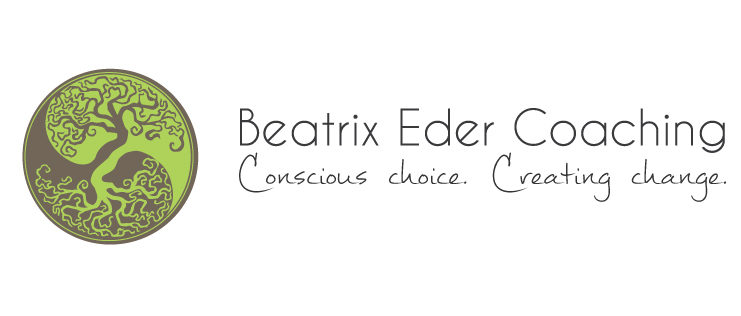
Coaching in the discomfort zone
Fear, uncertainty and discomfort are your compasses towards growth.
Most living beings prefer being in their comfort zone. What we are competent in, what we are familiar with grants us a sense of ease. Metaphorically, it is tempting to stay on main roads that are well paved as it makes the walk easier. Using our habits makes our decisions faster and actions more efficient.
It is a common habit to stay within the limits we deem safe and avoid our growing edge. The catch is that if we follow our natural instinct to bypass all uncertainty and discomfort, it becomes limiting and ultimately, we are held prisoner of our own comfortable and comforting habits.
No new territories can be discovered without a willingness to lose sight of the shore for a little while
Coaching is a thought-provoking and co-created process about changing perspectives and behavior. This is rarely comfortable, as much of coaching is about becoming aware of habits and patterns that do not serve us and then stretching ourselves to trying out something different.
If coaching sessions are only comforting and validating, there won’t be change in the life of the Client. Then, coaching is merely a cushy, accommodating conversation that brings some feel-good wallowing— but no change and transformation. Such a protective approach also implies a fragility of the Client who must be handled delicately otherwise they might fall apart.
In my coaching I will have an unconditional positive regard for my Client; at the same time I will point out habits and thinking patterns that hinder their fulfillment. I facilitate conversations that move towards self-led neuroplasticity and for this I will call out my Client’s power, raising their energy through a mix of support on the one hand and challenging them to shift viewpoints on the other hand.
If you want to rewire your brain, you must get out of your comfort zone
To use the analogy of walking on a path: if you find a path that has no obstacles, it means it has been walked many times by many people before you and there is no element of discovery and learning in it. In order to achieve growth and increase your performance, you must repeatedly train with more than what you can easily handle.
What’s the right amount of discomfort and ease?
So, how hard should a coach challenge the Client? How much should Clients push themselves? Should they aim for easy baby steps or ambitious stretch-goals? What if the Client feels nervous, anxious, uncomfortable? Is this a sign of optimal pacing or that the coaching is counter-productive?
Neuroscience gives us plenty of information on how to stimulate cognitive restructuring for growth. For example, the Yerkes-Dodson law, which is a concept from behavioral psychology that says that performance increases with physiological and mental arousal (meaning stress)— but only up to a point.
This means that if you are a bit nervous in the process, you are more likely to achieve the desired results because your attention and motivation will be more focused on the task.
Finding the sweet spot
In a coaching session we want to find that sweet spot where you are somewhat uncomfortable, achieving an optimal level of stress to increase your functioning.
To demonstrate with a real life example: if you have to give a presentation in front of a group of important people, you will probably make more impact if you are a bit nervous (and well prepared, of course). However, if your nervousness overpowers you and you are paralyzed or erratic by thinking of the upcoming presentation, you might lose your voice or forget the structure, despite having well prepared it.
Therefore, moderate anxiety and discomfort are more effective in changing brain structure than waiting until we feel completely prepared and confident to try something new.
This is why the coaching process is an interactive process that unfolds moment by moment, adjusting levels of support and challenge as necessary.
Whatever the method, I commit to explore with my Clients deeply, directly, and compassionately. The purpose and intention for our coaching is to create insight, move into action and dance at your growing edge.
Walking the dirt road
Clients have the responsibility to challenge themselves with sufficient difficulty, and to increase the challenge as they progress. They must be willing to engage in tasks of sufficient intensity and frequency to train themselves to adopt new patterns of thinking and behavior. Being coached effectively is no different than practicing a new skill: the answer lies in dedication and determination.
Think of your comfort zone as paths that have been walked many times. You know where they are smooth, where they are turning, you know where they lead. When you want to get fast from point A to B, walking these paths can be useful.
Yet if you want to grow, explore and create, make sure that you take a few dirt roads and leave a trail behind! Walking these dirt roads might be more nerve wracking than the paved ways: they might make you feel less sure of yourself and ask you to be more focused, more courageous – and the reward might be a totally new perspective, a new way of seeing and doing things than before and the proud feeling that you have made it!
Questions you might ask yourself
- When was the last time that you tried something new, even if it was something as basic as brushing your teeth with your non-dominant hand?
- When did you embrace the ideas of another person who’s opinion was the opposite of your understanding of the topic?
- How do you find comfort in discomfort?
- What would happen if you kept all discomfort away in your life?



